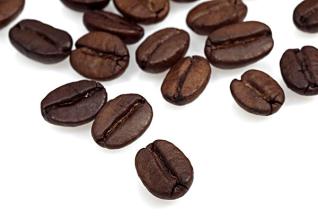Introduction to the graphic framework of coffee fruit decomposition diagram
Introduction to the graphic framework of coffee fruit decomposition diagram
Honey treatment: honey treatment, called HoneyProcess or MielProcess, honey treatment is the method of peeling off the pulp and drying the fruit with endocarp. Coffee roasting is a science. The age, density, hardness and moisture content of raw beans will affect the quality of roasted coffee. Even the relative humidity and temperature on the day of baking can not be ignored. Baking is the direct heating of the baking without oil, water, salt or sugar. Wet processing (washing): also known as washing processing, the coffee fruit is screened by soaking, and then the selected fruit is fermented and squeezed to remove the sticky pulp on the surface of the peel, pulp and silver skin. the processed coffee beans will retain the silver skin on the surface for storage, and the coffee beans in this state are called "parchment coffee beans" (Parchment Coffee). Wait until before the exit to remove the dried silver skin with a peeling machine. The biggest advantage of wet processing is that the appearance quality of coffee beans is good, and the original flavor is maintained well. The disadvantage is that the processing cost is high and a lot of water is needed. Generally used for the processing of high-quality coffee beans from coffee fruit to coffee beans, the processing methods can be roughly classified as dry processing and wet processing, as well as dense processing.
Dry processing (solarization): the coffee fruit is dried and dehydrated by natural conditions such as sunlight and ventilation, and then the dried coffee fruit is shelled to remove pulp, peel and silver peel. This method is the most economical and traditional processing method, the coffee beans treated by this method can maintain the fragrance for a long time, but also have a certain environmental smell. At present, this method is widely used in many parts of Africa and Asian countries, but with the progress of science and technology, many places have begun to use dryers to dry coffee fruits.

Important Notice :
前街咖啡 FrontStreet Coffee has moved to new addredd:
FrontStreet Coffee Address: 315,Donghua East Road,GuangZhou
Tel:020 38364473
- Prev

Analysis on the spread and Development Market of Coffee in China
Market Analysis of the spread and Development of Coffee in China for Chinese people, coffee and instant coffee have been two interchangeable terms for a long time. Until tea restaurants such as Starbucks in the United States and Hong Kong entered, people began to realize that coffee was not instant coffee, but something else. What is it? It's fashion. It's an abstract painting in Starbucks.
- Next

Coffee fruit to seed process-coffee fruit decomposition diagram
Coffee fruit to seed process-Coffee fruit decomposition map from harvest to delivery after the harvest of the fruit, the skin and pulp. The endocarp and silver peel are removed to form coffee beans. There are two kinds of methods: drying (natural drying, non-washing) and washing. Dry type, easy to operate, spread the harvested fruit on the dry ground, bask in the sun for a week or two, and you can hear it when you turn it.
Related
- What brand of black coffee is the most authentic and delicious? what are the characteristics of the flavor of the authentic Rose Summer Black Coffee?
- Introduction to the principle and characteristics of the correct use of mocha pot A detailed course of mocha pot brewing coffee is described in five steps.
- Which is better, decaf or regular coffee? how is decaf made?
- How much is a bag of four cat coffee?
- How about four Cat Coffee or Nestle Coffee? why is it a cheap scam?
- Which is better, Yunnan four Cats Coffee or Nestle Coffee? How about cat coffee? is it a fake scam? why is it so cheap?
- How about Cat Coffee? what grade is a hoax? which instant coffee tastes better, four Cat Coffee, Nestle Coffee or G7 coffee?
- Process flow chart of coffee making-Starbucks coffee making process what coffee tastes good at Starbucks
- The top ten best coffee beans in the world Rose summer coffee or Tanzanian coffee tastes good
- Yunnan four cat coffee is good to drink?_four cat coffee is a big brand? four cat blue mountain coffee is fake?

